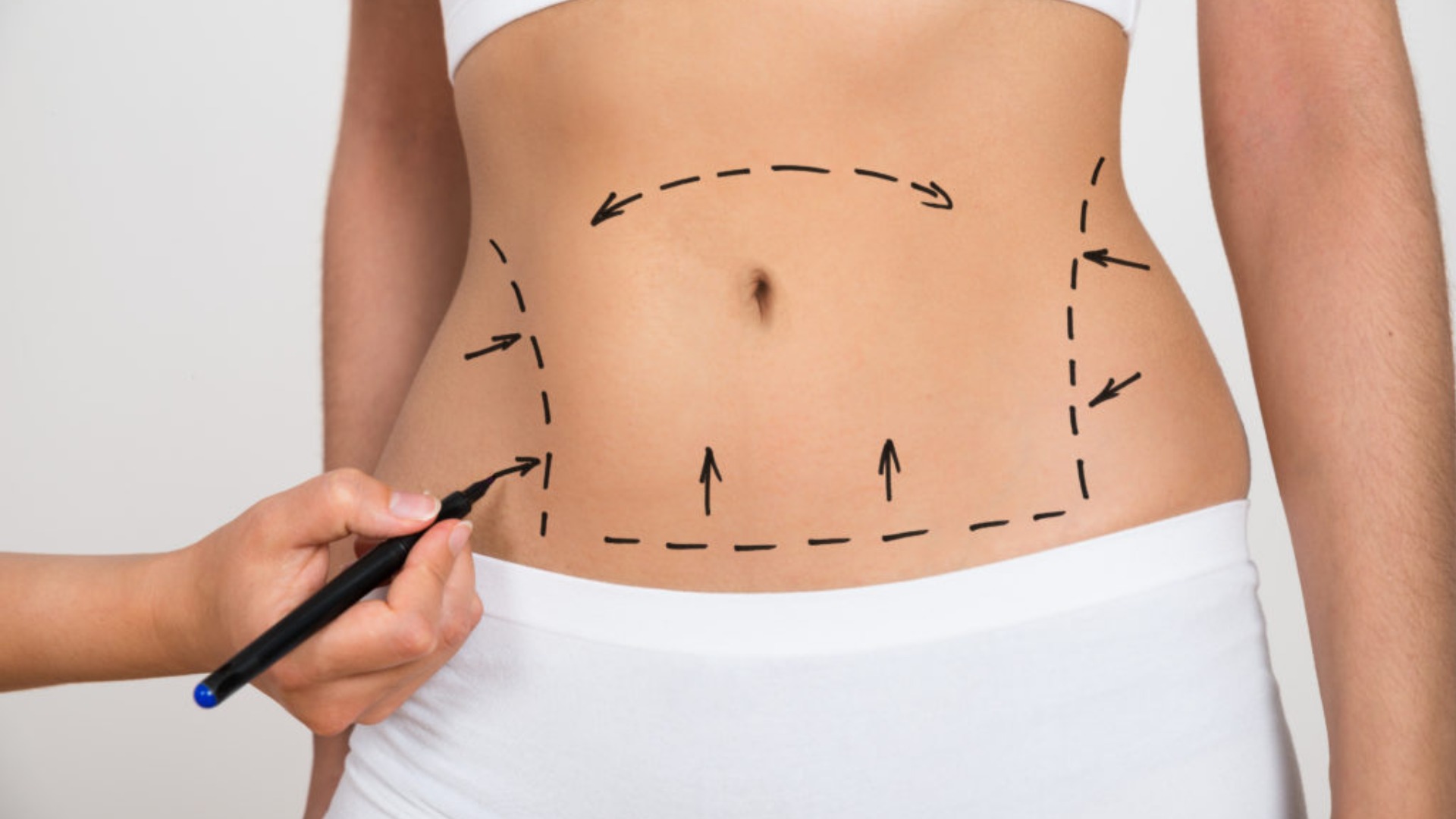is indicated in patients with smaller areas of localized fat. It is easy to perform, though it requires multiple treatments. Liposuction works well for bigger fat deposits but, being a surgical operation, takes a longer time to recover from, with some risk involved. Your choice depends on your needs and your doctor’s advice.
What Is Fat Dissolving
is a cosmetic, non-surgical procedure to reduce the number of fat cells in the body and is usually applied to a certain part of the body. The most common fat-dissolving techniques include injections of fat-dissolving substances and cryolipolysis, with the application for different states of fat. Fat dissolving injection treatments are performed by injecting a special fat-reducing substance directly into areas of the body such as the chin, abdomen, and other resistant areas of fat. The dissolving agent typically includes salts of deoxycholic acid, which destroy the membranes of fat cells and, hence, are digested by the body and excreted. A course of treatment typically consists of multiple injections; noticeable results could become visible after 2-3 weeks post-procedure, but results are known to vary from person to person.
Cryolipolysis is one of the methods in which low temperatures are used to freeze fat cells at targeted areas, according to the predictable control of the local inflammatory effect, leading to apoptosis of fat cells. As a rule, this approach does not damage the surrounding tissues and skin. In due course, when fat cells begin to freeze, the body metabolizes them gradually and removes them through its physiological processes. This procedure is performed where the layers of fat are small and evenly distributed, like in the abdomen and love handles. Cryolipolysis was approved in 2010 by the U.S. Food and Drug Administration for fat reduction from certain areas. Generally speaking, a single session can reduce fat in a particular area by approximately 20%-25%.
It works for those who want to get rid of localized fat without surgery and with a less amount of fat want a natural result. However, fat dissolution works differently depending on the individual conditions and number of treatments. It cannot be expected to work for people that need large amounts of fat removal and urgent slimming.
Basic Knowledge of Liposuction
Liposuction is a surgical method for removing excessive fat from a part of the body to shape it as one desires. This could be done under either local or general anaesthesia; the doctor makes small incisions and inserts a cannula into the layer of fat and sucks excess out using negative pressure. It might be performed on areas with much fat, such as the tummy, buttocks, thighs, and arms. It is also indicated for those patients who are within the normal weight range but with apparent localized fat deposits.
Liposuction was first utilized in the 1970s. With technological advances, liposuction has become safer and more precise. New techniques, such as ultrasound-assisted liposuction and laser-assisted liposuction, allow surgeons to be more specific with pinpointing the fat layers, resulting in less bleeding and post-operative discomfort. Liposuction works because a reduction in fat cells results in permanent body contour improvement. However, it does not help in weight control; hence, even after the procedure, one must be that keen to stick with a healthy life so one does not gain weight, which results in redistribution of fat in other parts. Recovery from liposuction takes a number of weeks, the time depending on individual differences, surgical area, and the amount of fat sucked.
According to statistics by ISAPS, liposuction ranks among the highest cosmetic surgical operations in the world, attracting tens of thousands of patients each year. Liposuction not only significantly enhances body shape but also helps decrease fat in the targeted area quickly; thus, it is ideal for individuals who seek rapid weight loss or improvements in body contour. This is, however, an invasive surgical operation that has a number of risks associated with it, such as infection, bleeding, and bumpy skin.
Advantages of Fat Dissolving
The major advantages of fat dissolving include that this is a non-invasive and safe operation. As no cuts are to be made, and there is no need for anesthesia, infection, bruising, and damage to tissues are reduced or minimal. Downtime is relatively very short, and most people can go back to daily activities on the same day. While cryolipolysis and fat-dissolving injections may enable most people to return to normal in a matter of days, both will generally have minor swelling or redness, whereas some may experience discomfort.
works mainly on small areas of fat and is great for those who are generally happy with the overall shape of their body but wish to decrease the fat at certain spots. For example, although the total percentage of body fat for an individual may be within the normal range, a double chin, arm fat, or love handles can still disturb the person. In these cases, fat dissolution can be very effective for creating local improvements in one’s appearance. Besides, treatment time is very short, about 30 minutes to an hour per session, which makes it ideal for busy individuals or people that prefer not to risk surgery.
A study showed that about 85% of patients who went through fat dissolving treatments were content with the results and developed no major after-effects. For both cryolipolysis and fat dissolving injections, satisfaction rates fell in the 78%-80% range. For customers with fast-paced modern lifestyles, the convenience and gentleness of fat dissolving make it ever so popular.
Disadvantages of Fat Dissolving
The effect of dissolving is not immediate in areas with a thicker layer of fat, or when the percentage of body fat is higher; this may sometimes require repeated treatments. Most of the patients who undergo this fat-dissolving treatment begin to feel an improvement within weeks or even months, and each session manages to reduce only about 20% of the localized fat. Therefore, fat dissolving could be unsuitable for those who want to see quick and significant fat loss, and the overall cost could also be higher compared to one-time liposuction.
Another drawback with fat dissolving is that it does not last very long. The fat cells diminish through this treatment; however, they would grow once weight is not under control, or the fat will build up in other places. The metabolic process relies on the body’s natural metabolism to dissolve fat, so strict dietary control and frequent exercise are required in the post-operative recovery period. Especially for cryolipolysis, the body may take six months for its natural fat metabolic process. Although satisfactory, this method may not be the ideal choice for those patients who demand immediacy of results.
The price of fat dissolving goes up with the number of treatments, which usually costs 3,000 to 5,000 RMB for a single session. It often takes more than one session to achieve results, so the prices ultimately run about comparable to or higher than a single liposuction procedure. Quite a number of patients have already taken several shots before they realized that it did not work that well, and hence they had to take more injections or consider liposuction.
Advantages of Liposuction
The most significant benefit of liposuction is that it can have profoundly effective results in reducing fat. Because liposuction removes excess fat cells directly, this means that it is sometimes able to reduce much fat in the treated areas of the body with only one session and achieve instantly apparent results. Therefore, for body parts with much fat accumulation, liposuction can help patients quickly shape their perfect body contour. This is particularly suitable for patients whose body fat percentages are higher and want more dramatic improvements from a surgical body contour reshaping.
Another major positive aspect of liposuction is that the results of the surgery tend to be permanent. Because liposuction actually reduces the number of fat cells, accumulation is less likely to occur in previously treated areas. Studies have indicated that fat returning to areas that have been treated, other than minor accumulation, is highly unlikely unless there are significant weight increases. Therefore, post-surgery results can last for several years. The overall satisfaction rate for liposuction is similarly high, at about 90% of patients reporting satisfaction with the results and feeling that the procedure improved not only their body shape but also boosted their confidence.
Liposuction may also be combined with other procedures, such as tummy tucks or facial lifts, in order to assist the patients in achieving overall body sculpturing. Especially in patients with good skin elasticity, liposuction normally does not result in any significant sagging of the skin; hence, it is ideal for all those patients who desire rapid improvement in body contouring but are able to maintain weight thereafter.
Disadvantages of Liposuction
Liposuction is an invasive treatment that may result in potential complications, including bumpy skin texture, bruising, pain, and at worst, infection. Due to the fact that liposuction inflicts partial subcutaneous tissue injury, post-operative edema and discomfort are common, while the duration of convalescence is different from one to another; most patients may have to adjust their work and life schedule for several weeks after the surgery. This may even lead to sagging skin, particularly in cases of poor skin elasticity. Sagging skin may require additional surgical procedures to restore its firmness.
The cost of liposuction is generally fairly high and tends to vary depending on the body part targeted and the amount of fat being removed. The price for a session of liposuction may range from 5,000 to 30,000 RMB depending on the qualifications of the doctor, the difficulty of the procedure, or even depending on different geographic areas. Besides, liposuction has more risks than non-invasive treatments, such as bleeding during an operation, anesthetic reactions, or infection after an operation. These are especially high in non-professional medical settings or by unqualified doctors.
Although immediate in outcome, liposuction demands a patient to live a healthy life thereafter. Without proper attention to diet and exercise after the treatment, even though the fat cells do not regenerate at the treated sites, their increase is possible in other areas of the body and thus become unevenly distributed. Thus, liposuction is not a one-time solution and demands weight management and lifestyle changes post-operation.
How to Choose
Both fat dissolving and liposuction have advantages and disadvantages, so choosing between them would depend completely upon body type, health condition, and personal needs. Fat dissolving will be suitable in cases of localized, mild fat reduction needs, those who manage weight well, and people seeking less invasive procedures. The advantages are that it is non-invasive with shorter recovery time, though it has very limited results, especially when there are thicker layers of fat.
Liposuction targets individuals who have great needs in terms of reduction, particularly those with more extensive fat deposits desiring rapid weight loss. The results from liposuction tend to be longer-lasting






It’s really a nice and helpful piece of information. I’m glad that you shared this useful information with us. Please keep us informed like this. Thank you for sharing.